This article was medically reviewed by Jonas DeMuro, MD. Dr. DeMuro is a board certified Pediatric Critical Care Surgeon in New York. He received his MD from Stony Brook University School of Medicine in 1996. He completed his fellowship in Surgical Critical Care at North Shore-Long Island Jewish Health System and was a previous American College of Surgeons (ACS) Fellow.
There are 9 references cited in this article, which can be found at the bottom of the page.
This article has been viewed 79,276 times.
No matter the location and severity of a bone fracture, the recovery process is often painful, tiring, and frustrating. However, through a combination of rest, immobilization, following the orders of your doctor and pharmacist, and healthy dietary practice, you can streamline the recovery process.
Steps
Coping with a Fractured Bone
-
1Give your fracture time to heal. Your body needs time to mend itself and create new bone; a fracture generally takes between 6 and 12 weeks to heal substantially.[1] When healing, your bone will go through three stages:
- Inflammation: This process lasts for the first few days after a fracture. Local, internal bleeding and blood clotting provides bone stability and structure to allow bone regrowth.
- Bone Production: Your body will start to replace the clotted blood with soft cartilage tissue and, later with hard bone tissue.
- Bone Remodeling: This phase lasts several months to several years.[2] Bone continues to form and solidify, and blood circulation returns to the formerly fractured area .[3]
-
2Take any prescribed medications regularly. If you've been prescribed home medication, follow all of the directions that were given to you by your doctor or your pharmacy. Also, be aware of the drugs’ side effects and possible interaction with other drugs. Inform your physician immediately if you experience severe side-effects.Advertisement
-
3Keep the fracture immobile as much as possible. Immobilization is a key step of allowing your fracture to heal; avoid lifting much weight with your fractured limb during the early stages of healing.[4] Excessive movement and a lack of mobility will slow down the healing process and can result in a bone that has healed incorrectly or without much structural strength.
-
4Ask about the need for surgery. Some fractures will heal with immobilization and other therapies alone. However, surgery may be necessary to fully recover from a bone fracture in some cases. Talk to your doctor about your options if he or she has recommended a surgical procedure to mend your bone or to correct other problems. Surgery may be required to:[5]
- remove bone fragments.
- stabilize the bone.
- stop blood loss.
- improve range of motion.
Resting a Fractured Bone
-
1Attend or do therapy consistently. Physical therapy can be inconvenient or even painful, but it is essential in preventing muscle wasting. Therapy will increase the strength of the muscles which surround and encase your fractured bone; this process will speed up your recovery. In addition, follow-up medical appointments with an orthopedic specialist may be needed. [6]
- Start physical therapy after you have been given permission by your orthopedist. Your orthopedist will usually do a followup x-ray to make sure that the fracture has healed and ensure that it is safe to begin therapy.
-
2Watch out for possible signs of infection and other complications. There are multiple medical abnormalities that can result from a fractured bone, depending on the severity of the break and the age and general health of the individual. If you have any concerns about these problems, ask your doctor. These complications can include:
- Nonunion or malunion of the bone. Nonunion is when the bone cannot grow back together. Malunion is when the bone grows together improperly and requires surgical correction.[7]
- Severe pain.
- Swelling or discoloration of the casted limb.
- Smelly discharges and bleeding require you to seek medical help immediately.[8]
- Blot clots. Symptoms of a blood clot may include a warm, red, painful swollen spot under your skin.[9] [10] Seek medical help right away if you think you might have a blood clot.
-
3Don’t be afraid to ask for help. Waiting for a fracture to heal can be a slow, frustrating, and at times painful process. You may need to ask friends, family, coworkers, and/or your partner to help you perform tasks that you could normally do on your own without a problem. In these instances, don’t hesitate to ask for help with issues such as:
- Walking up and down stairs.
- Typing on a computer or using your phone.
- Driving a vehicle.
- Brushing your teeth and other hygiene tasks.
Helping a Bone Heal as Quickly as Possible
-
1Eat foods that are filled with calcium and vitamin D. Both calcium and vitamin D promote bone healing, so it is advisable to drink milk and consume other dairy products.[11] These foods will strengthen your bones and speed up the healing process. If for some reason you do not eat dairy products, then increase your consumption of food products such as:
- Calcium-enriched orange juice
- Tofu
- Almonds.
-
2Avoid taking ibuprofen and aspirin. Although these drugs decrease pain and inflammation, less inflammation is not always better. Inflammation is a natural part of the fracture-healing process; healing bones need the extra blood circulation brought by inflamed tissues. Taking large amounts of aspirin and ibuprofen can lengthen the healing process by decreasing the amount of inflamed tissue around your fracture.[12] To deal with the pain, try taking Tylenol (which doesn’t decrease inflammation) instead.
-
3Exercise more. Although your fractured bone needs time to heal and requires substantial immobility, this does not mean that you should not continue to exercise regularly.[13] Exercise will increase circulation throughout your body—especially to the area of your bone fracture. Moderate exercise can also increase the strength of your healing bone, and allow it to heal more quickly than if you cut out exercise altogether. Your healing fracture is still delicate; before it fully heals, you should only exercise in ways and controlled environments that will not further damage your fracture.
- Talk with your physician about when you can begin an exercise regimen and what exercises you can do.
-
4Avoid behaviors or habits that can slow down bone healing. Avoiding physical therapy, not following your doctor’s orders, and mistreating your cast can all have negative effects on the speed of your fracture’s recovery.[14] Also avoid activities like:
- Smoking (which decreases circulation)
- Placing weight on the fractured bone too soon.
- Poor nutrition.
- Excessive alcohol intake.
-
5Return to regular activities. Once your fracture has fully healed, it’s time to start easing back into normal physical activity, including running, going to the gym, playing sports, etc. Make sure that you’ve consulted with your doctor and your physical therapist; fractures can take more or less time to heal based on factors like age, health, and diet.[15] As you regain activities:
- Start slow and ease back into things, especially if your fracture left you relatively immobile for weeks or months.
- Through the recovery process, stay fit and keep a good mental attitude; wait for your fracture to fully heal before you engage in strenuous activity, and you’ll lower your chances of re-injury and have a successful recovery! [16]
Warnings
- Be wary of medication side-effects and drug interactions.⧼thumbs_response⧽
- Watch out for infections and other complications.⧼thumbs_response⧽
- Use canes, crutches, and walkers carefully and as instructed.⧼thumbs_response⧽
- If your cast is made of Plaster of Paris, avoid getting it wet. Also, for the first two days of wearing the cast do not put stress over it as Plaster of Paris takes a bit to dry.⧼thumbs_response⧽
References
- ↑ http://www.foothealthfacts.org/footankleinfo/Bone_Healing.htm
- ↑ https://www2.aofoundation.org/wps/portal/surgerymobile?contentUrl=/srg/popup/further_reading/PFxM2/12_33_biol_fx_heal.jsp&soloState=precomp&title=&
- ↑ http://www.foothealthfacts.org/footankleinfo/Bone_Healing.htm
- ↑ http://www.foothealthfacts.org/footankleinfo/Bone_Healing.htm
- ↑ http://emedicine.medscape.com/article/1270717-treatment#d10
- ↑ http://www.emedicinehealth.com/broken_leg/page8_em.htm#broken_leg_medical_treatment
- ↑ http://emedicine.medscape.com/article/1270717-treatment#d15
- ↑ https://www.healthgrades.com/procedures/7-tips-for-recovering-with-a-broken-leg
- ↑ http://emedicine.medscape.com/article/1270717-treatment#d15
- ↑ http://www.mayoclinic.org/symptoms/blood-clots/basics/when-to-see-doctor/sym-20050850
- ↑ https://www.healthgrades.com/procedures/7-tips-for-recovering-with-a-broken-leg
- ↑ http://www.womenshealthnetwork.com/osteoporosisandbonehealth/speedbonefracturehealing.aspx
- ↑ http://www.womenshealthnetwork.com/osteoporosisandbonehealth/speedbonefracturehealing.aspx
- ↑ http://www.foothealthfacts.org/footankleinfo/Bone_Healing.htm
- ↑ http://orthoinfo.aaos.org/topic.cfm?topic=A00365
- ↑ http://orthoinfo.aaos.org/topic.cfm?topic=A00365
About This Article
To help your fracture heal faster, eat foods rich in calcium and vitamin D, such as milk and almonds. You can also speed up healing by taking Tylenol instead of ibuprofen or aspirin for pain relief, since Tylenol doesn’t inhibit inflammation, which is necessary for healing. Once you have kept your fracture immobile for a few weeks to let your bones set, start with light exercises to boost blood circulation. However, before you begin exercising, make sure to consult your doctor and ideally train under a physiotherapist. For advice from our Medical co-author on how to tell if your fracture is healing properly, read on!




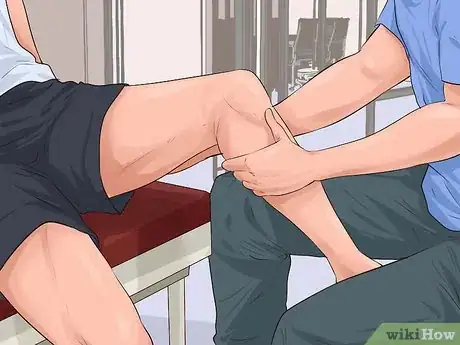




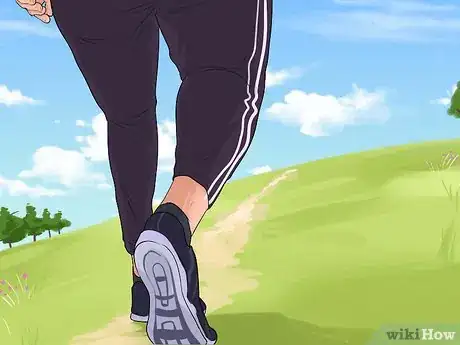
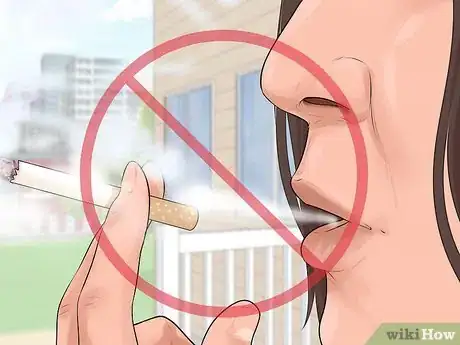

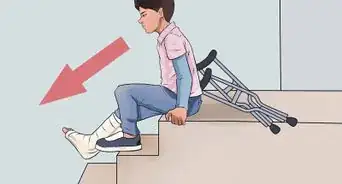
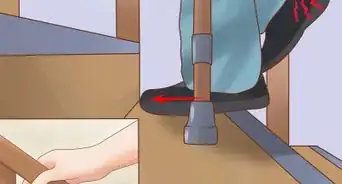




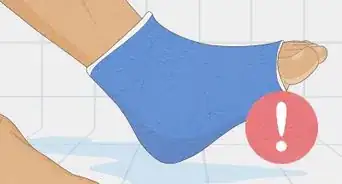

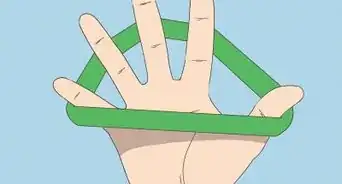

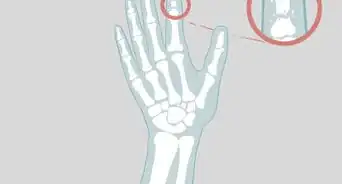










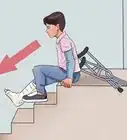







































Medical Disclaimer
The content of this article is not intended to be a substitute for professional medical advice, examination, diagnosis, or treatment. You should always contact your doctor or other qualified healthcare professional before starting, changing, or stopping any kind of health treatment.
Read More...